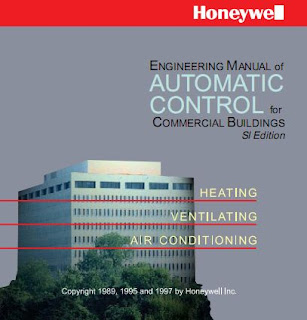Engineering Manual of Automatic Control for Commercial Buildings
Heating Ventilating Air Conditioning
PDF | 512 pages | 3.9 MB
The purpose of this manual is to provide the reader with a fundamental understanding of controls and how they are applied to the many parts of heating, ventilating, and air conditioning systems in commercial buildings.
Many aspects of control are presented including air handling units, terminal units, chillers, boilers, building airflow, water and steam distribution systems, smoke management, and indoor air quality. Control fundamentals, theory, and types of controls provide background for application of controls to heating, ventilating, and air conditioning systems. Discussions of pneumatic, electric, electronic, and digital controls illustrate that applications may use one or more of several different control methods. Engineering data such as equipment sizing, use of psychrometric charts, and conversion formulas supplement and support the control information. To enhance understanding, definitions of terms are provided within individual sections.
Building management systems have evolved into a major consideration for the control engineer when evaluating a total heating, ventilating, and air conditioning system design. In response to this consideration, the basics of building management systems configuration are presented.
The control recommendations in this manual are general in nature and are not the basis for any specific job or installation. Control systems are furnished according to the plans and specifications prepared by the control engineer. In many instances there is more than one control solution. Professional expertise and judgment are required for the design of a control system. This manual is not a substitute for such expertise and judgment.
Always consult a licensed engineer for advice on designing control systems.
It is hoped that the scope of information in this manual will provide the readers with the tools to expand their knowledge base and help develop sound approaches to automatic control.


No comments:
Post a Comment